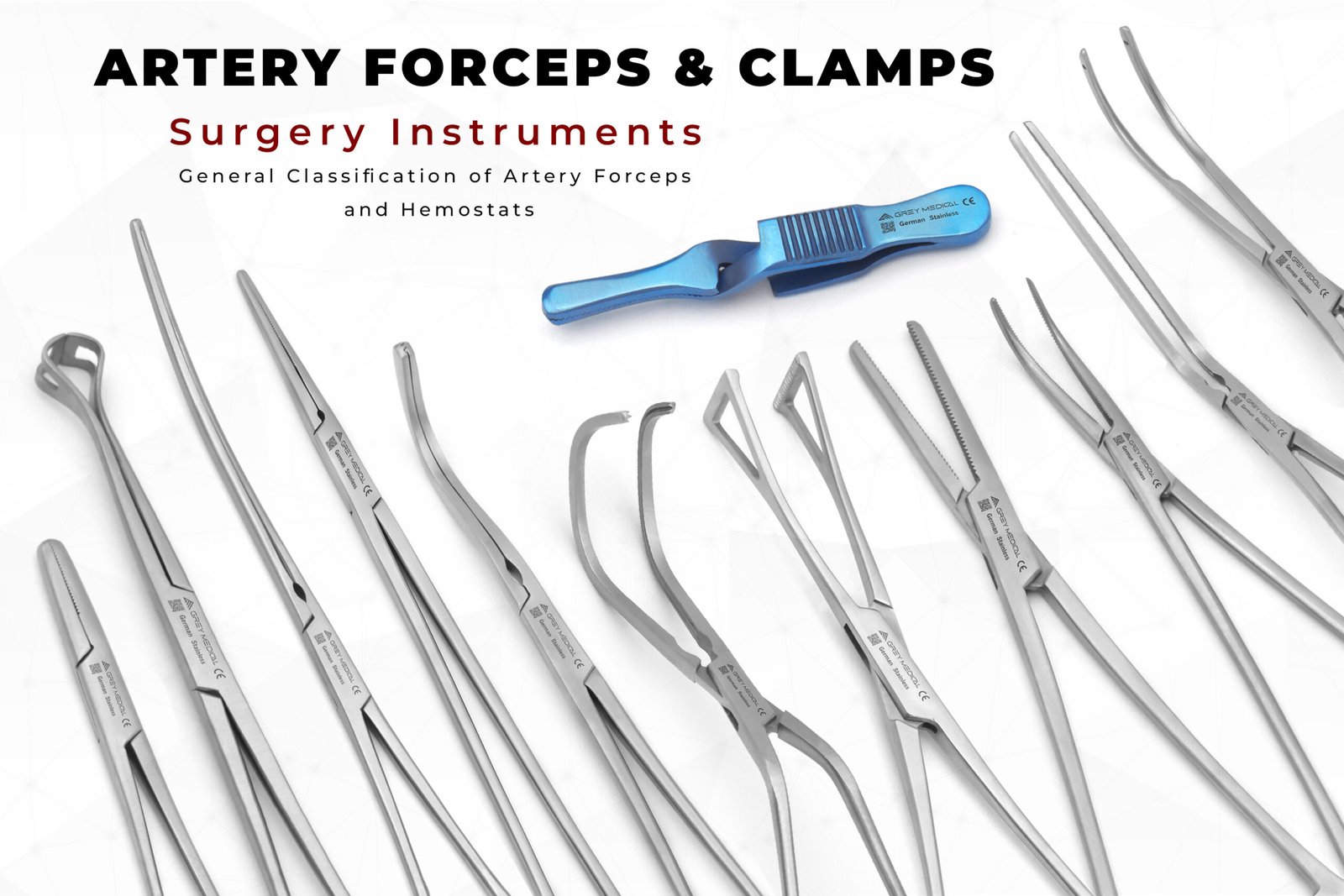
Surgical artery forceps, also known simply as artery forceps or hemostats, are fundamental instruments used in surgical procedures to control bleeding. These tools are designed to clamp blood vessels and prevent excessive blood loss during surgery. By applying precise pressure to arteries, veins, or small vessels, artery forceps play a critical role in achieving hemostasis—one of the most vital steps in any surgical procedure. Surgical artery forceps function is especially important in maintaining a clear and blood-free surgical field, allowing the surgeon to work with accuracy and confidence.
Artery forceps are typically made from high-grade stainless steel, which offers excellent durability, corrosion resistance, and the ability to withstand repeated sterilization. They come in various sizes and patterns to accommodate different surgical needs and anatomical structures. The most common types include straight and curved artery forceps. Curved forceps are especially useful for navigating around tissues and structures deep within the body, while straight forceps are preferred for more accessible areas. The choice between them often depends on the specific surgical site and the surgeon’s preference.
The working ends of artery forceps feature serrated jaws that grip tissues and vessels securely without slipping. These jaws are carefully aligned to provide even pressure when the instrument is clamped shut. The handles include a ratchet locking mechanism, allowing the forceps to remain clamped in place without continuous pressure from the surgeon’s hand. This locking system is particularly useful during longer procedures, as it allows the instrument to maintain its grip on a vessel while the surgeon performs other tasks.
One of the most widely recognized forms of artery forceps is the Halsted Mosquito Forceps, which are small and delicate, ideal for clamping tiny blood vessels. These are frequently used in plastic surgery, ENT procedures, and pediatric surgeries where precision is paramount. Larger versions like the Kelly Forceps and Rochester-Pean Forceps are used for clamping larger vessels and tissues, particularly in general, abdominal, and orthopedic surgeries.
Besides their primary function in controlling bleeding, artery forceps are also used to hold or manipulate tissues, grasp sutures, or temporarily secure small surgical instruments. Their versatility makes them indispensable in any operating room, and they are included in nearly every surgical instrument tray.
Artery forceps are also manufactured with specialized coatings or finishes to enhance their performance. For example, some feature tungsten carbide inserts in the jaws for superior grip and durability. Others may have matte or satin finishes to reduce glare under surgical lights. These enhancements contribute to greater precision, safety, and comfort during procedures.
In conclusion, surgical artery forceps are a cornerstone of modern surgical practice. Their ability to effectively clamp blood vessels and assist in achieving hemostasis makes them crucial for patient safety and surgical success. With various designs tailored to specific procedures and anatomical areas, artery forceps continue to be refined and improved, ensuring they meet the evolving demands of the surgical field.